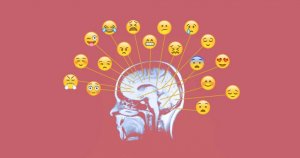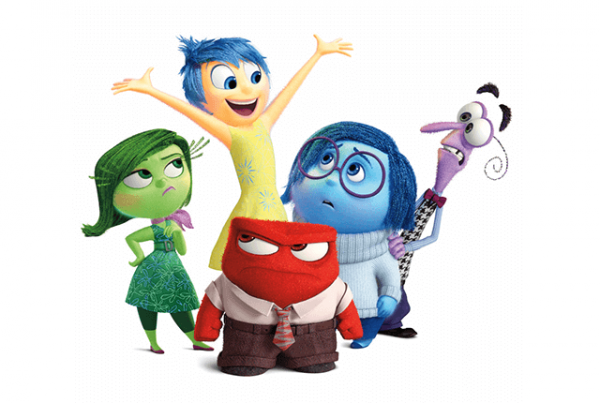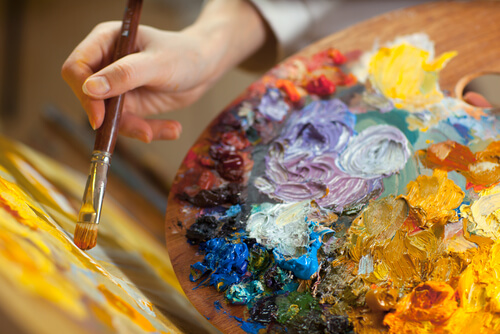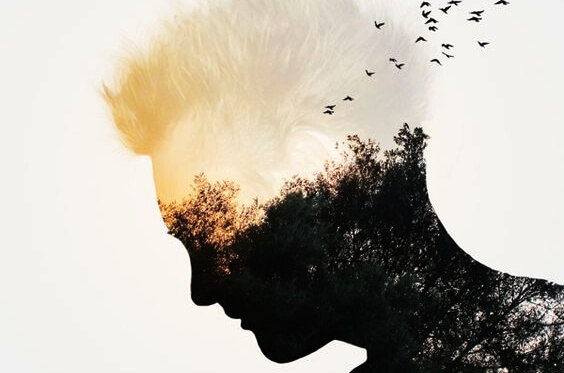Learn the Best Exercises and Activities to Work Through Your Emotions


Written and verified by the psychologist Sergio De Dios González
Emotions are a fundamental part of the development of human experiences. They’re our way of expressing ourselves, and sometimes they’re more important than words.
If words aren’t said with the appropriate emotions, people probably won’t believe them. When we express something with emotion, we normally use facial expressions, images, metaphors, and tones of voice.
They help us understand and express much more than words by themselves, but only when the emotions line up with the words. That’s one reason working on our emotions is extremely important.
The biological design that commands our emotional spectrum has been with us for over fifty thousand generations. In fact, it has contributed to our survival as a species.
Every single one of us is programmed with automatic reactions, or biological predispositions for action. But the things we go through in life act as models for our responses to emotional stimuli. And that’s what we have to work through to achieve emotional balance.
If we think for a minute about how important our emotions are, we’ll quickly see what an impact they’ve had on our lives. A lot of times without us realizing it.
It’s important to recognize how our state of mind affects our behavior. And to understand our skills and weak points. We might be surprised how little we know ourselves.
“Because everything in life is eternally beautiful, and every instant has its ineffable emotion”
-Rafael Lasso de la Vega-
Do Our Emotions Control Us?
When we’re emotionally intelligent individuals we let things influence us, but not control us. Emotional self-control allows us to process our feelings or emotions so that they aren’t deciding for us.
There’s nothing strange about getting angry with our partner, friends, family, or coworkers. But if we were slaves to emotion we’d constantly be acting irresponsibly or impulsively.
And we might regret it later on. If we don’t know where our emotions come from or why we’re experiencing them, it can be very confusing.

Some say that nothing makes us feel as human as our emotions. Very human and very dependent. When a powerful feeling floods us, it can take up our entire mind.
If that feeling is undesirable, there’s only one quick way to get it out of our minds. Another emotion, another stronger emotion, incompatible with the one we’re trying to replace.
Controlling our emotions doesn’t exactly consist of rational victories or impositions. It also doesn’t consist of repression or our control of the emotions themselves.
It consists of the fitting or pairing of our emotions with our reasoning. That is a balance between different mental processes.
Highly emotionally intelligent people know that processing and working on their emotions doesn’t mean repressing them. But, they also know that when we’re with other people, we have to keep in mind how others interpret what we express. Balance is the key to our interactions.
So our emotions won’t control us we have to be clear about how human needs go far beyond physiological ones, like food or water. There are emotional needs too.
Watching over this aspect of our own psychology will help us to improve the “diagnoses” we make about possible emotional conflicts.
That’s why highly emotionally intelligent people tend to reflect on what they feel. They also tend to be consistent with the conclusions they reach through that reflection.
“We plant seeds that will flower as results in our lives, so best to remove the weeds of anger, avarice, envy and doubt, that peace and abundance may manifest for all”
-Dorothy Day-
Using Art to Work Through Our Emotions
The arts, like all non-verbal expressions, encourage the exploration, expression, and communication of things we’re not aware of. Working on our emotions through art therapy improves the quality of human relations because it focuses on the emotional factor.
This factor is essential for every human being. It helps us be more aware of darker aspects, and, in this way, makes a person’s development easier.
We can’t be rationally or linearly aware of all the activities or information surrounding us. When we drive, for example, most of our attention is directed at the main task of looking ahead and controlling the car.
But at the same time, unconsciously, we listen to the sound of the motor, change gears, and think about the past and future.
To simplify conscious thought, there are three fundamental creative mechanisms for organizing information and experience.
These are: filtering, generalizing, and distorting. Those mechanisms reduce information by prioritizing, excluding, and making decisions. They’re the basis for all learning.
The mechanisms that organize information are the basis for understanding where our emotions come from. If we only filter the negative information out of what happens to us, these mechanisms will probably make us feel anxious.
On the other hand, if we filter more tightly and make fewer generalizations in the personal sphere, it would be easier for us to feel healthy emotions. Negative ones are just as much as positive ones.

We give power to our non-verbal communication skills through art. Art can help us express and communicate feelings. It makes it easier to reflect, communicate, and possibly change behavior.
Art therapy uses art as a therapeutic outlet for improving psychological conditions. Especially ones related to anxiety. Art can be a wonderful outlet to channel it through.
But on top of the therapeutic impact it might have, art therapy is also a personal growth technique. It helps us with self-knowledge and emotional expression.
So, there’s no need to have any kind of psychological disorder. You just have to feel the need to explore yourself through art, and start to work through your emotions.
Art therapy trains and strengthens by allowing us to:
- Express feelings that are hard to talk about, thus providing a outlet for communication.
- More accessibly express ourselves verbally.
- Increase our self-esteem and confidence.
“Education is the ability to listen to almost anything without losing your temper or self-confidence”
-Robert Frost-
How Do We Improve our Emotional Intelligence?
The idea of emotional intelligence gives us a glimpse of how it can be trained through routine. If emotional intelligence is our ability to successfully process and work through our emotions, and we vary the way they manifest, we’ll be using the challenge for good.
Unlike I.Q., which stays just about the same our whole lives, we can grow our emotional intelligence over time. We can and should learn how to develop our emotional intelligence through the techniques psychology offers.
Working through our emotions isn’t an easy task. But while it’s hard, it’s not impossible. To improve our emotional intelligence and work through our emotions, we have to be ready to experience all kinds of them.
Not repress a single one. If we ignore or repress our feelings, we’ll be ignoring important information that has a huge effect on the way we think and behave.
Techniques for developing and improving emotional intelligence:
- Observing our emotional reactions throughout the day. It’s easy to put off the feelings we experience day-to-day. But taking the time to acknowledge how things make you feel is essential for emotional intelligence.
- Pay attention to your body. Instead of ignoring the physical manifestations of your emotions, start to listen to them. Our minds and bodies aren’t separate entities. They have are very closely linked. You can raise your emotional intelligence by learning to interpret the signals your body uses to tell you about your emotions.
- Don’t judge your own emotions. All of our emotions are valid, even the negative ones. If we judge our emotions, we’ll inhibit our ability to feel things fully. That will make it harder for us to take advantage of our emotions in a positive way. All of our emotions are a new piece of useful information. Without it, we’d have no idea how to properly react.

- Being open goes hand-in-hand with emotional intelligence. A closed mind tends to be an indicator of low emotional intelligence. When our minds are opened through internal understanding and reflection, it’s easier to face conflicts in a calm, confident way.
- Observing the effect you have on other people. To raise your emotional intelligence, understanding other people’s emotions is half the battle. We also have to understand the effect we have on other people.
- Lowering stress levels by raising our emotional intelligence. Stress is a broad term that refers to the anxiety we feel due to a wide variety of emotions. Stress triggers a huge amount of things, which can turn a mundane problem into a big problem. If we’re really stressed, it will be hard for us to behave the way we want to.
- Empathy. Being a more active listener and paying attention to what other people say will help us understand their feelings. When we’re able to use that information to make decisions and improve our relationships, our emotional intelligence is healthy.
Emotional intelligence means more than just controlling feelings and working through emotions. It also implies the ability to control ourselves.
“My friends are lifelong heroes, the sweet emotion that replaces cruel reality”
-Miguel Abuelo-
Bibliography
Antunes, C. (2004). Juegos para estimular las inteligencias múltiples (Vol. 5). Narcea Ediciones.
Arteterapia, A. P., & para la Inclusión Social, E. A. (2016). Ser, narrar, imaginar. Experiencias Arteterapéuticas en intervención con menores y aportaciones desde la mirada interdisciplinar. Arteterapia, 11, 221-222.
Bassols, M. (2006). La arteterapia, un acompañamiento en la creación y la transformación. Arteterapia. Papeles de arteterapia y educación artística para la inclusión social, 1, 19-25.
Duncan, N. (2007). Trabajar con las Emociones en Arteterapia/Art Therapy and emotions. Arteterapia, 2, 39-49.
Fernández, E. R. (2007). Aplicaciones del Arteterapia en aula como medio de prevención para el desarrollo de la autoestima y el fomento de las relaciones sociales positivas:” Me siento vivo y convivo”/” Art Therapy applications in the classroom as a preventive measure using artistic manifestations for the self esteem development and the fostering of positive social relationships:” I FEEL ALIVE AND CO LIVE”. Arteterapia, 2, 275-291.
Gardner, H. (1998). Frames of Mind: The Theory of Multiple Intelligences. Fontana Press
Goleman, D. (1995). Emotional Intelligence: Why it Can Matter More Than I.Q. Bantam Books.
Greenberg, L. (2000). Emociones: una guía interna. Ed. Descleé de Brouwer.
Problem-Solving Therapy: The Scientific Method of Making Decisions
Emotions are a fundamental part of the development of human experiences. They’re our way of expressing ourselves, and sometimes they’re more important than words.
If words aren’t said with the appropriate emotions, people probably won’t believe them. When we express something with emotion, we normally use facial expressions, images, metaphors, and tones of voice.
They help us understand and express much more than words by themselves, but only when the emotions line up with the words. That’s one reason working on our emotions is extremely important.
The biological design that commands our emotional spectrum has been with us for over fifty thousand generations. In fact, it has contributed to our survival as a species.
Every single one of us is programmed with automatic reactions, or biological predispositions for action. But the things we go through in life act as models for our responses to emotional stimuli. And that’s what we have to work through to achieve emotional balance.
If we think for a minute about how important our emotions are, we’ll quickly see what an impact they’ve had on our lives. A lot of times without us realizing it.
It’s important to recognize how our state of mind affects our behavior. And to understand our skills and weak points. We might be surprised how little we know ourselves.
“Because everything in life is eternally beautiful, and every instant has its ineffable emotion”
-Rafael Lasso de la Vega-
Do Our Emotions Control Us?
When we’re emotionally intelligent individuals we let things influence us, but not control us. Emotional self-control allows us to process our feelings or emotions so that they aren’t deciding for us.
There’s nothing strange about getting angry with our partner, friends, family, or coworkers. But if we were slaves to emotion we’d constantly be acting irresponsibly or impulsively.
And we might regret it later on. If we don’t know where our emotions come from or why we’re experiencing them, it can be very confusing.

Some say that nothing makes us feel as human as our emotions. Very human and very dependent. When a powerful feeling floods us, it can take up our entire mind.
If that feeling is undesirable, there’s only one quick way to get it out of our minds. Another emotion, another stronger emotion, incompatible with the one we’re trying to replace.
Controlling our emotions doesn’t exactly consist of rational victories or impositions. It also doesn’t consist of repression or our control of the emotions themselves.
It consists of the fitting or pairing of our emotions with our reasoning. That is a balance between different mental processes.
Highly emotionally intelligent people know that processing and working on their emotions doesn’t mean repressing them. But, they also know that when we’re with other people, we have to keep in mind how others interpret what we express. Balance is the key to our interactions.
So our emotions won’t control us we have to be clear about how human needs go far beyond physiological ones, like food or water. There are emotional needs too.
Watching over this aspect of our own psychology will help us to improve the “diagnoses” we make about possible emotional conflicts.
That’s why highly emotionally intelligent people tend to reflect on what they feel. They also tend to be consistent with the conclusions they reach through that reflection.
“We plant seeds that will flower as results in our lives, so best to remove the weeds of anger, avarice, envy and doubt, that peace and abundance may manifest for all”
-Dorothy Day-
Using Art to Work Through Our Emotions
The arts, like all non-verbal expressions, encourage the exploration, expression, and communication of things we’re not aware of. Working on our emotions through art therapy improves the quality of human relations because it focuses on the emotional factor.
This factor is essential for every human being. It helps us be more aware of darker aspects, and, in this way, makes a person’s development easier.
We can’t be rationally or linearly aware of all the activities or information surrounding us. When we drive, for example, most of our attention is directed at the main task of looking ahead and controlling the car.
But at the same time, unconsciously, we listen to the sound of the motor, change gears, and think about the past and future.
To simplify conscious thought, there are three fundamental creative mechanisms for organizing information and experience.
These are: filtering, generalizing, and distorting. Those mechanisms reduce information by prioritizing, excluding, and making decisions. They’re the basis for all learning.
The mechanisms that organize information are the basis for understanding where our emotions come from. If we only filter the negative information out of what happens to us, these mechanisms will probably make us feel anxious.
On the other hand, if we filter more tightly and make fewer generalizations in the personal sphere, it would be easier for us to feel healthy emotions. Negative ones are just as much as positive ones.

We give power to our non-verbal communication skills through art. Art can help us express and communicate feelings. It makes it easier to reflect, communicate, and possibly change behavior.
Art therapy uses art as a therapeutic outlet for improving psychological conditions. Especially ones related to anxiety. Art can be a wonderful outlet to channel it through.
But on top of the therapeutic impact it might have, art therapy is also a personal growth technique. It helps us with self-knowledge and emotional expression.
So, there’s no need to have any kind of psychological disorder. You just have to feel the need to explore yourself through art, and start to work through your emotions.
Art therapy trains and strengthens by allowing us to:
- Express feelings that are hard to talk about, thus providing a outlet for communication.
- More accessibly express ourselves verbally.
- Increase our self-esteem and confidence.
“Education is the ability to listen to almost anything without losing your temper or self-confidence”
-Robert Frost-
How Do We Improve our Emotional Intelligence?
The idea of emotional intelligence gives us a glimpse of how it can be trained through routine. If emotional intelligence is our ability to successfully process and work through our emotions, and we vary the way they manifest, we’ll be using the challenge for good.
Unlike I.Q., which stays just about the same our whole lives, we can grow our emotional intelligence over time. We can and should learn how to develop our emotional intelligence through the techniques psychology offers.
Working through our emotions isn’t an easy task. But while it’s hard, it’s not impossible. To improve our emotional intelligence and work through our emotions, we have to be ready to experience all kinds of them.
Not repress a single one. If we ignore or repress our feelings, we’ll be ignoring important information that has a huge effect on the way we think and behave.
Techniques for developing and improving emotional intelligence:
- Observing our emotional reactions throughout the day. It’s easy to put off the feelings we experience day-to-day. But taking the time to acknowledge how things make you feel is essential for emotional intelligence.
- Pay attention to your body. Instead of ignoring the physical manifestations of your emotions, start to listen to them. Our minds and bodies aren’t separate entities. They have are very closely linked. You can raise your emotional intelligence by learning to interpret the signals your body uses to tell you about your emotions.
- Don’t judge your own emotions. All of our emotions are valid, even the negative ones. If we judge our emotions, we’ll inhibit our ability to feel things fully. That will make it harder for us to take advantage of our emotions in a positive way. All of our emotions are a new piece of useful information. Without it, we’d have no idea how to properly react.

- Being open goes hand-in-hand with emotional intelligence. A closed mind tends to be an indicator of low emotional intelligence. When our minds are opened through internal understanding and reflection, it’s easier to face conflicts in a calm, confident way.
- Observing the effect you have on other people. To raise your emotional intelligence, understanding other people’s emotions is half the battle. We also have to understand the effect we have on other people.
- Lowering stress levels by raising our emotional intelligence. Stress is a broad term that refers to the anxiety we feel due to a wide variety of emotions. Stress triggers a huge amount of things, which can turn a mundane problem into a big problem. If we’re really stressed, it will be hard for us to behave the way we want to.
- Empathy. Being a more active listener and paying attention to what other people say will help us understand their feelings. When we’re able to use that information to make decisions and improve our relationships, our emotional intelligence is healthy.
Emotional intelligence means more than just controlling feelings and working through emotions. It also implies the ability to control ourselves.
“My friends are lifelong heroes, the sweet emotion that replaces cruel reality”
-Miguel Abuelo-
Bibliography
Antunes, C. (2004). Juegos para estimular las inteligencias múltiples (Vol. 5). Narcea Ediciones.
Arteterapia, A. P., & para la Inclusión Social, E. A. (2016). Ser, narrar, imaginar. Experiencias Arteterapéuticas en intervención con menores y aportaciones desde la mirada interdisciplinar. Arteterapia, 11, 221-222.
Bassols, M. (2006). La arteterapia, un acompañamiento en la creación y la transformación. Arteterapia. Papeles de arteterapia y educación artística para la inclusión social, 1, 19-25.
Duncan, N. (2007). Trabajar con las Emociones en Arteterapia/Art Therapy and emotions. Arteterapia, 2, 39-49.
Fernández, E. R. (2007). Aplicaciones del Arteterapia en aula como medio de prevención para el desarrollo de la autoestima y el fomento de las relaciones sociales positivas:” Me siento vivo y convivo”/” Art Therapy applications in the classroom as a preventive measure using artistic manifestations for the self esteem development and the fostering of positive social relationships:” I FEEL ALIVE AND CO LIVE”. Arteterapia, 2, 275-291.
Gardner, H. (1998). Frames of Mind: The Theory of Multiple Intelligences. Fontana Press
Goleman, D. (1995). Emotional Intelligence: Why it Can Matter More Than I.Q. Bantam Books.
Greenberg, L. (2000). Emociones: una guía interna. Ed. Descleé de Brouwer.
Problem-Solving Therapy: The Scientific Method of Making Decisions
All cited sources were thoroughly reviewed by our team to ensure their quality, reliability, currency, and validity. The bibliography of this article was considered reliable and of academic or scientific accuracy.
- Antunes, C. (2004). Juegos para estimular las inteligencias múltiples (Vol. 5). Narcea Ediciones.
- Arteterapia, A. P., & para la Inclusión Social, E. A. (2016). Ser, narrar, imaginar. Experiencias Arteterapéuticas en intervención con menores y aportaciones desde la mirada interdisciplinar. Arteterapia, 11, 221-222.
- Bassols, M. (2006). La arteterapia, un acompañamiento en la creación y la transformación. Arteterapia. Papeles de arteterapia y educación artística para la inclusión social, 1, 19-25.
- Duncan, N. (2007). Trabajar con las Emociones en Arteterapia/Art Therapy and emotions. Arteterapia, 2, 39-49.
- Fernández, E. R. (2007). Aplicaciones del Arteterapia en aula como medio de prevención para el desarrollo de la autoestima y el fomento de las relaciones sociales positivas:” Me siento vivo y convivo”/” Art Therapy applications in the classroom as a preventive measure using artistic manifestations for the self esteem development and the fostering of positive social relationships:” I FEEL ALIVE AND CO LIVE”. Arteterapia, 2, 275-291.
- Gardner, H. (1998). Inteligencias múltiples. Barcelona: Paidós.
- Goleman, D. (1999). La práctica de la inteligencia emocional. Editorial Kairós.
- Greenberg, L. (2000). Emociones: una guía interna. Ed. Descleé de Brouwer.
This text is provided for informational purposes only and does not replace consultation with a professional. If in doubt, consult your specialist.







